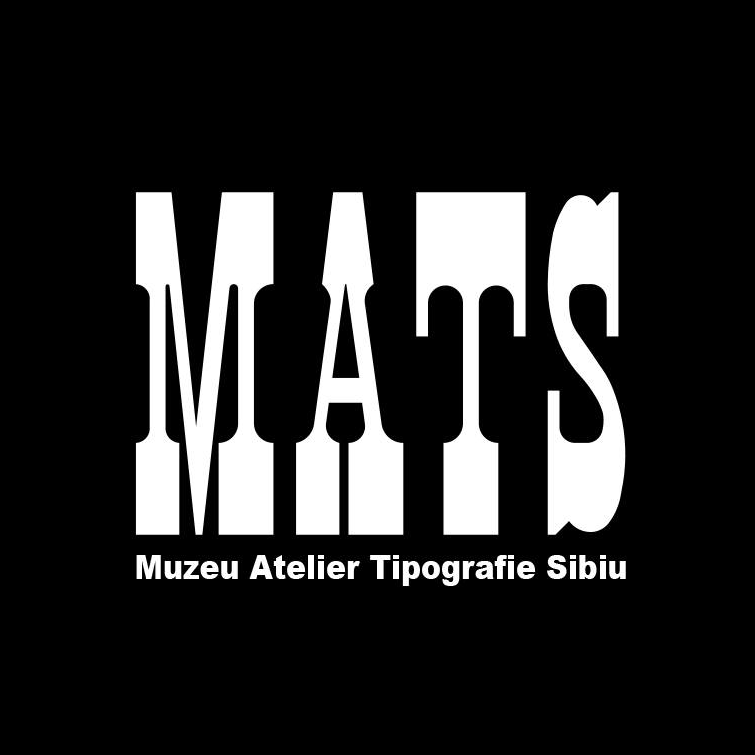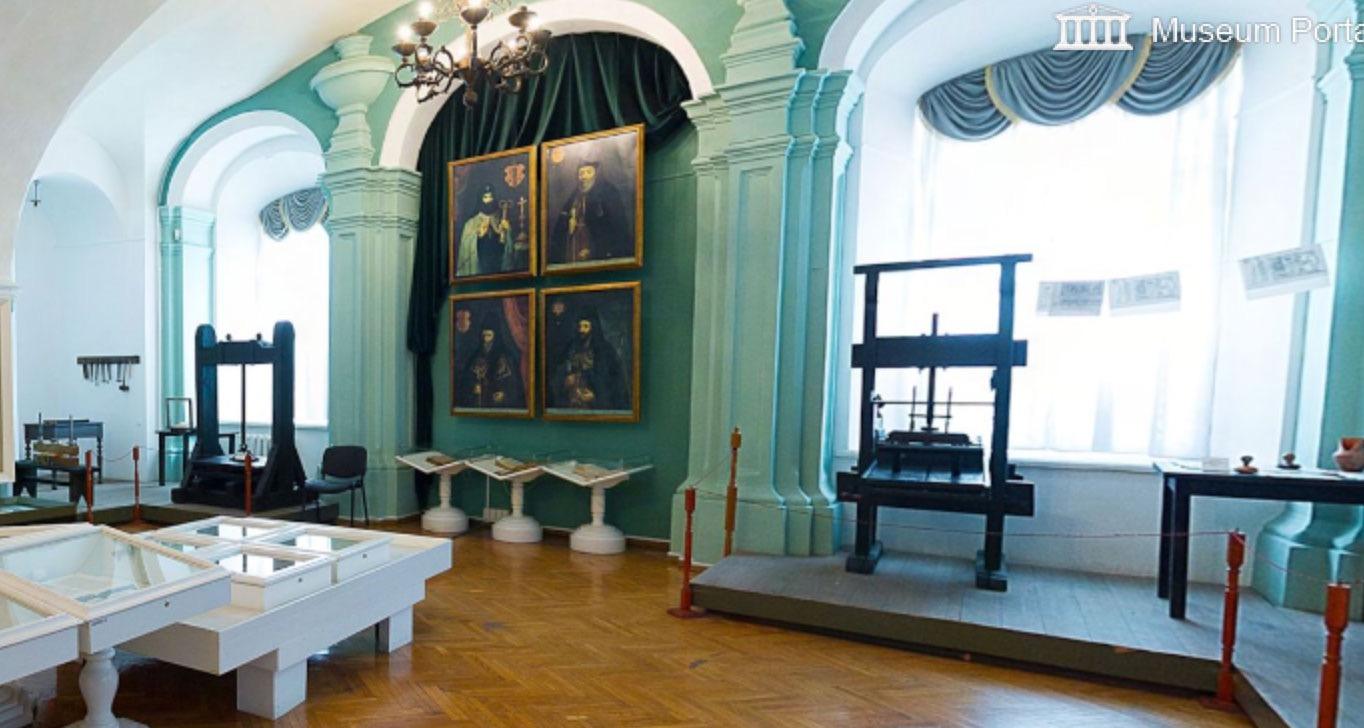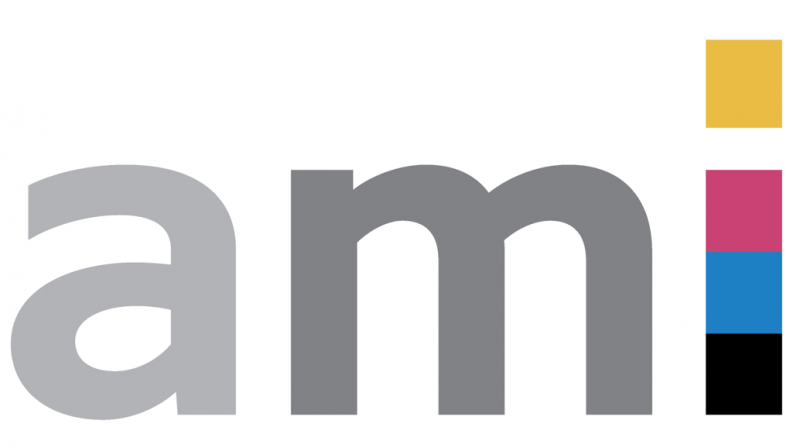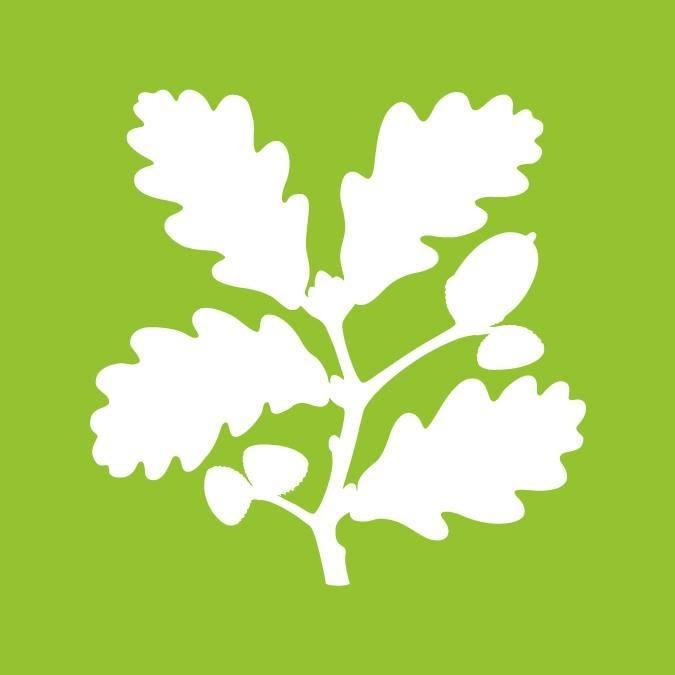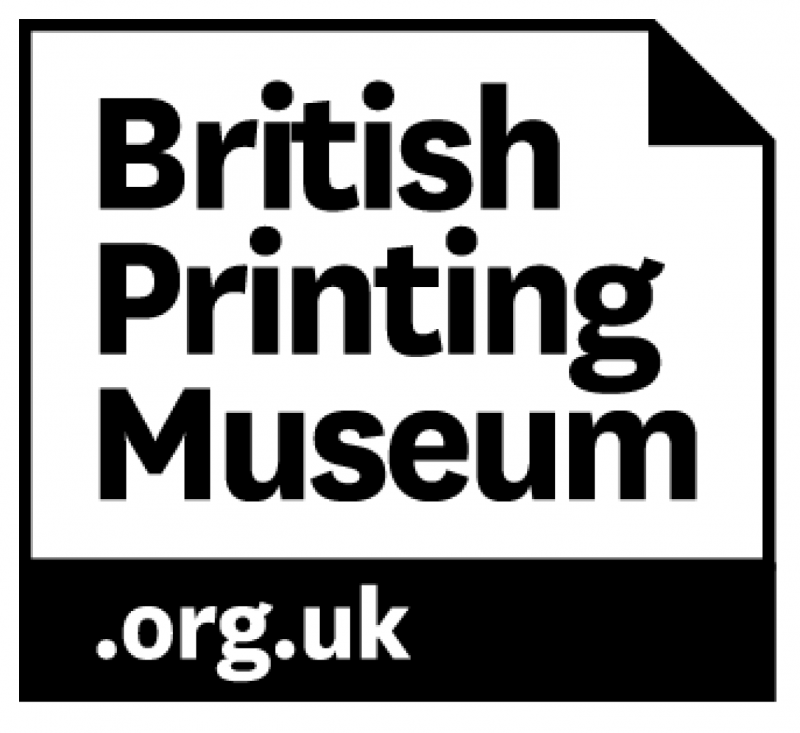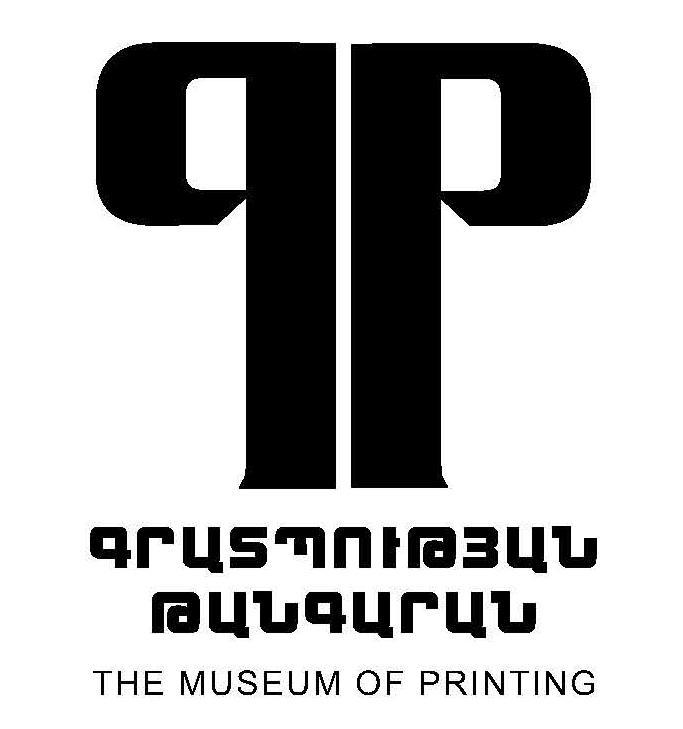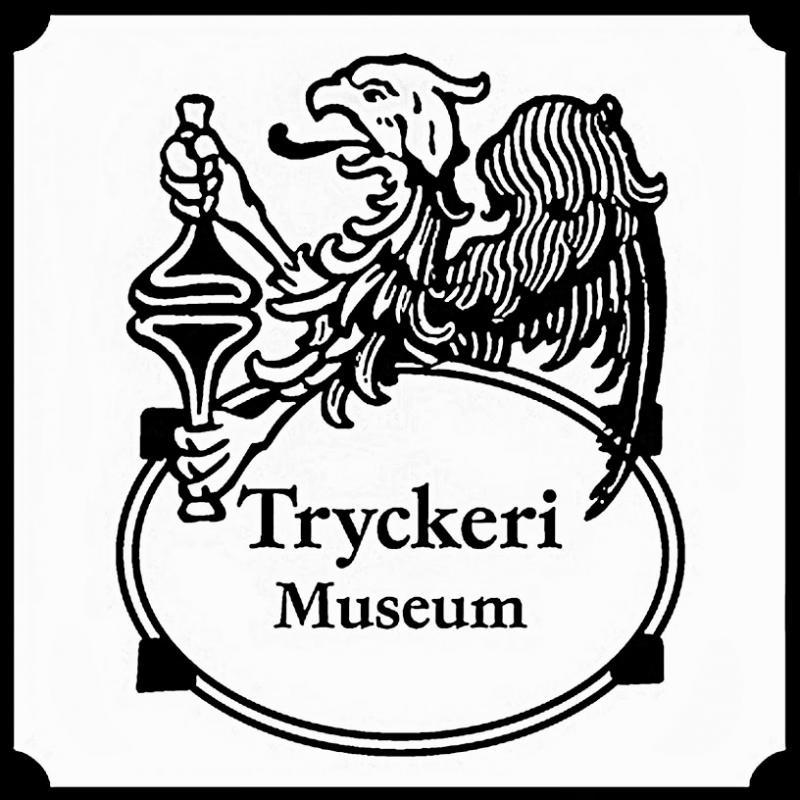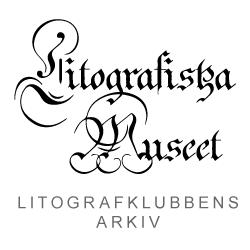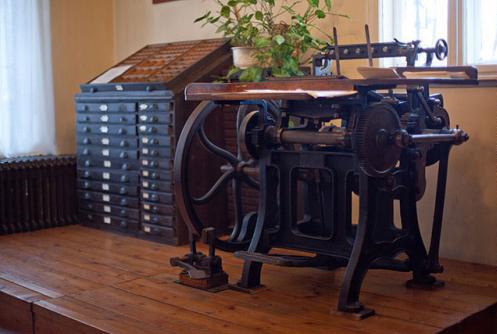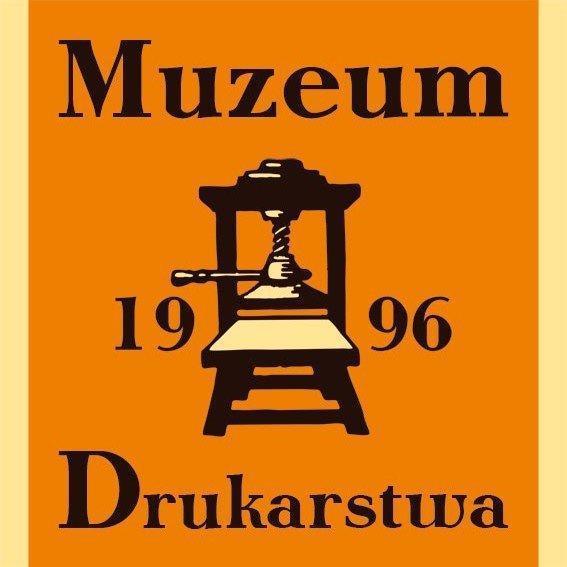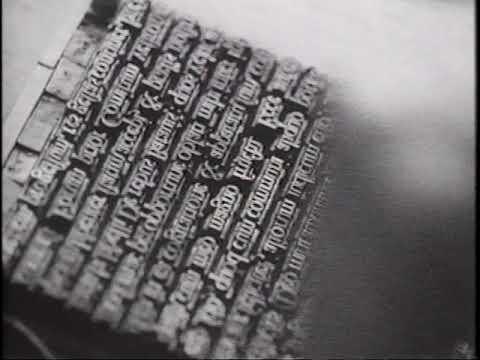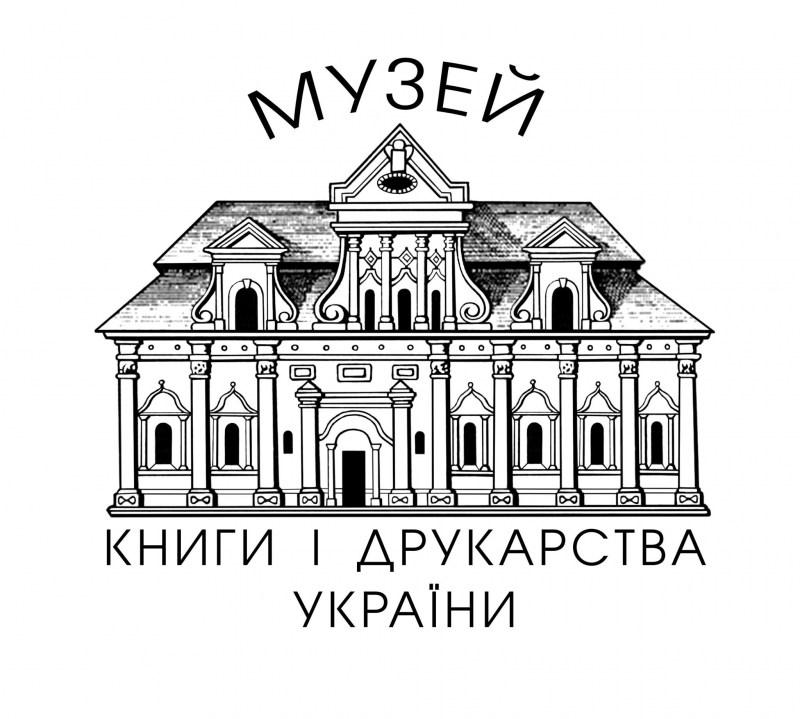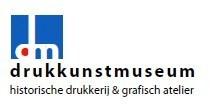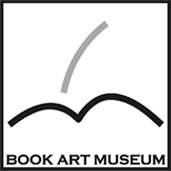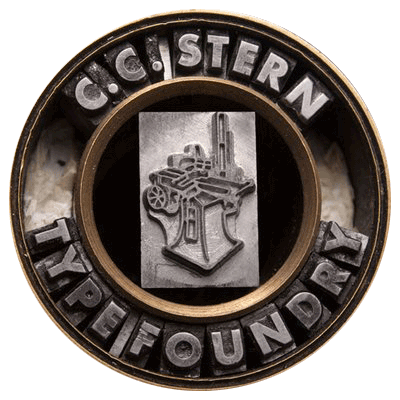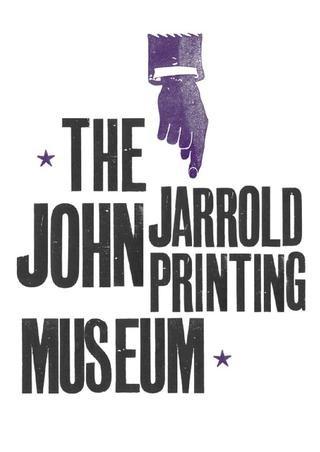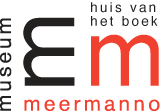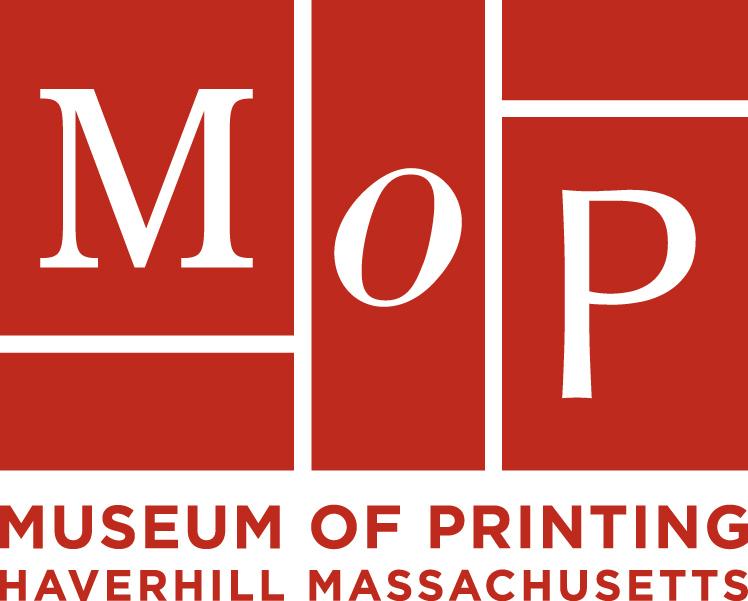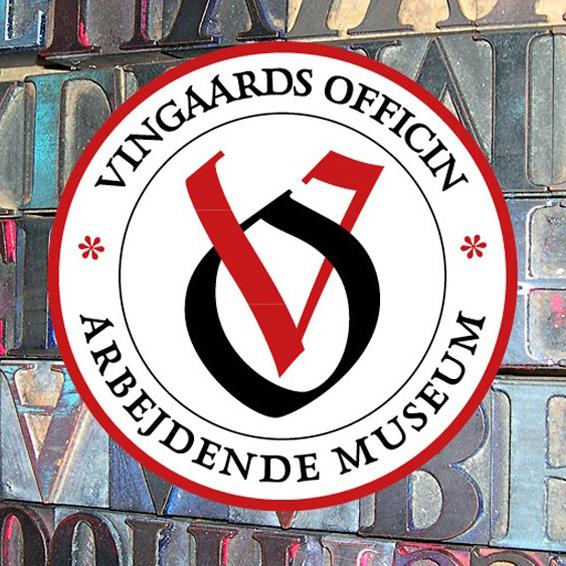Search the Community
Showing results for tags 'museum'.
-
-

At risk: Ukraine’s Museum of the Book and Printing
Ralf Herrmann posted a news entry in Typography Weekly #118
-
Atelier-Musée Imprimerie (AMI) is a large printing museum in Malesherbes, 70 kilometers South of Paris. Created by Jean-Paul and Chantal Maury it offers 5,000 square meters of exhibition space including workshops where visitors can make paper or learn the arts and crafts of paper marbling, type composition, printing and bookbinding. The 700 objects on display include 150 machines.
-
Inaugurated in 1987, in Campos do Jordão, the Xylography Museum is a private museum in a building erected in 1928. This house formerly sheltered the Benedictine Nuns of the Saint John Monastery. Today it headquarters the company Editora Mantiqueira (Mantiqueira Publishing House), which sponsors the Xylography Museum. The Museum collects and preserves woodcut and wood engraved prints, that is, printings made on paper (or another support material) from a wood block. This technique is also known as Xylography. Part of the Museum’s collection, which currently includes thousands of works by more than one thousand engravers, is permanently displayed to the public. The Xylography Museum also promotes other cultural events, and holds a woodcut and wood engraving atelier, a typography printing shop and a specialized library. The Xylography Museum is located in Brazil, in the city of Campos do Jordão, State of São Paulo. Nestled in the Serra da Mantiqueira (Mantiqueira Mountains), at an altitude of 1,700 meters, the city of Campos do Jordão has always attracted artists and writers. Currently, with its luxury hotels, it attracts tourists from all over the world, and especially from the three major Brazilian cities – São Paulo, Rio de Janeiro and Belo Horizonte. Such tourist influx has stimulated the organization, in the city, of important cultural milestones, such as the Classical Music International Festival, the most important erudite music festival in Latin America, the permanent art collection of the State Government Summer Palace, and the Xylography Museum.
-
- xylography
- museum
-
(and 1 more)
Tagged with:
-
Gray’s Printing Press is located behind an 18th-century shop front in the heart of Strabane, once the famous printing town of Ulster. It is here that the printer of the American Declaration of Independence is said to have learned his trade. The collection includes 19th century printing machinery and a fine collection of wood and metal type. The items can also be browsed online.
-
The British Printing Museum is a comprehensive private museum collection of letterpress printing equipment with working press exhibits dating from 1860 up to the 1960s. Open to the public by prior arrangement and to industry and education groups for meetings, workshops and demonstrations, the museum collection is based upon some of the original presses, type, wood letter and printing blocks used by The Portland Press, Mablethorpe from the 1940s and added to significantly. Activities include: Letterpress workshops – on an ad hoc basis Letterpress typesetting / printing courses – arranged for individuals or small groups Educational tours, active, fun with small creative workshops Activities for students of all ages and abilities – curriculum related Disabled access and facilities with special guided tour for the visually impaired
-
- museum
- letterpress
-
(and 2 more)
Tagged with:
-
2012 marked the 500th anniversary of Armenian printing. In honor of this 500 year history, the National Library of Armenia decided to create a museum about Armenian printing in order to show the importance of printing in Armenia’s history as well as to present the rich products that the National Library has. The collection includes exhibits on antique books, history of Armenian printing, printing equipment, Clichés, printing machines and other subsidiary scientific research to provide for an interesting museum. In 2016, the museum was open to visitors in its new main exhibition. It will be equipped with new technologies to create an interactive environment for informal education.
-
-
The Imprenta Municipal is a printing museum in Madrid. Its origin dates from 1853, with the establishment of Saint Bernardino Orphanage Printing Office to supply the printing needs of the City Council. The building was designed in 1931 and opened in 1933 for use as a printing office. It is an interesting example of Rationalism and Art Deco style. In 2009 it was refurbished to be used as a printing museum. The Imprenta Municipal material collection is a very rich one, with historical machines and other artefacts related to graphic arts. Some of them are displayed in the permanent exhibition, Printing and the book, a story, that is located on the ground floor, offering visitors an agreable promenade through the sections dealing with the hand press printing period, the industrial age, illustration techniques and the bindery. On the first floor a temporary exhibition room and workshop spaces open to the public. One of the most important features of the museum are the professional typography and bookbinding workshops which are a means of preserving the skills and techniques which are the non-material heritage of printing. From its opening as a museum at the end of 2011, the Imprenta Municipal has developed an ongoing programme of temporary exhibitions about written culture, book and printing history and the graphic arts, accompanied by many lectures and public workshops.
-
The Musée de l'Imprimerie is a museum in Lyon, France, with the mission of enhancing, conserving, documenting and valuing the heritage of printed books and graphic. The Musee de l'Imprimerie was established in Lyon because Lyon had been a centre of printing and the book trade in Europe in the 15th and 16th centuries and the city held large historical collections of books and the graphic arts. The museum was designed by the master printer and historian Maurice Audin, with the historian of the book, Henri-Jean Martin, then chief curator of the Library of Lyon.
-
The Museum of Lithography (Litografiska Museet) in Huddinge (Sweden) is a combined museum and workshop specialized in stone printing. The goal is to keep the art of lithography alive. With workshops, school activities, exhibitions and visiting lithographers the museum shows the original direct print in old presses and in the high speed printing press “Johanna” from the late 19th century. There are also artists in residence working at the museum. The museum owns a collection of art works, posters, labels, letterheads, packages etc. from the 20th century to the 1940s. There are also approximately 1,000 lithographic stones with the old motifs preserved on most of the stones.
-

Museo de la Imprenta y de las Artes Gráficas
Ralf Herrmann posted a directory entry in Museums & Libraries
The first book ever printed in Spain (a devotional book exalting the Virgin Mary) was made in Valencia in 1474. This museum was founded as a tribute to this event and is located in the El Puig de Santa María Royal Monastery. It has many extremely valuable facsimile books, as well as wooden presses, letter moulds, printers’ marks, hand-carved relief plates and printing implements from Gutenberg's era. Since the museum's creation in 1986, the collection has expanded thanks to the addition of private collections. -
The Kner Printing Museum has been operating since 1970 in the former house of Imre Kner. The house was built in 1925, according to the sketches of the arhitect and graphic Lajos Kozma, in popular baroque style. The exhibition of the museum show the works of the members of Kner family and the history of the Kner press from its opening of 1882 up to our days. The museum operates only during the summer season. Izidor Kner founded his printing house in 1882. The founder and his sons were respected for their excellent quality of production and high artistic level. Between the two world wars, thanks to these principles, the name Kner came to represent the best publications of Hungary. The second world war put an end to the development of the printing house; several members of the Kner family became victims of the holocaust. In 1949 the printing works were nationalised. 1963 saw a fusion between the printing house of Gyoma and another, Tevan of Békéscsaba. The large, newly created printing house took the name Kner, but the central office was at Bekescsaba. More recent changes of regime in Hungary were followed by changes at Gyoma also, and in 1992 the printing house became a private company.
-
The Printing Museum was established in 1996 to preserve and to protect the material and cultural values of the Cieszyn printing guilds. Its aim is also to commemorate the rich traditions of typography in the area of Cieszyn. All the machinery is in perfect working condition. The museum is one of the best- equipped places of its kind in the entire country. It also collects all possible documents on the history of printing and on persons of merit in this field. Beside visiting, the museum offers an especially elaborated programme for young visitors – pupils from primary and secondary schools. Within one hour they visit the museum and witness the creation of prints by an archaic way; from the types set by hand, then mechanically obtained cast of types to the final printout. The Graphic Studio started in 2004.The graphic room offers special stands for designing and creating graphic works and is adapted for bookbinding workshops. Typographic workshops take place in an historic composing room and also offer examining the whole exhibition.
-
“The Making of a Renaissance Book”, originally issued as a black-and-white film shot on location at the Plantin-Moretus Museum in Antwerp, covers cutting a type punch; making a copper strike and justifying the matrix; casting and dressing the type; composition, imposition and proof-reading; inking and running off the sheets; stop-press corrections.
-
- plantin-moretus
- museum
-
(and 3 more)
Tagged with:
-

State Museum of Books and Book Printing of Ukraine
Ralf Herrmann posted a directory entry in Museums & Libraries
The State Museum of Books and Book Printing of Ukraine was founded in 1972 and opened to the public in 1975. It is situated witthin the territory of Kyiv-Pechersk Lavra (National Historic-Cultural Reserve) in the building of former printing house which was operating for over 300 years (from 17th to the early 20th century). The museum’s collection comprises over 58 thousand items: the unique handwritten manuscripts (15th-17th centuries), the first Ukrainian printed publications - “Apostle” (1574) and famous Ostrog Bible (1581). There are over 800 early printed books and incunabula, rare European publications, folios with covers made of precious materials, 18th-century wooden clichés. Some books are presented in a unique copy that could be found nowhere else in Ukraine. The Museum’s exposition represents the history of Ukrainian book, book publishing industry from the Kievan Rus to modern times. Visitors are given an insight on the origins of the written language of Eastern Slavs, invention of the Glagolitic and Cyrillic alphabets by Saints Cyril and Methodius in the 9th century, the usage of live Ukrainian language and specific font - “Ustav” - in handwritten books from the 11th to 16th centuries. During excurision the visitors will be able to find out more about the history of printing in Europe, publishing business of Ivan Fedoriv and other prominent Ukrainian and European publishers of 16th-18th centuries; multiple facsimile publications of famous handwritten books: “Anthologies of Sviatoslav” (1073), Reims Gospel (11th century), Ostromir Gospels (1056-1057), Peresopnytsia Gospel (1556-1561) and many other old printed books of Lviv, Ostrog, Pochayiv, Chernihiv, Kyiv-Pechersk Lavra printing facilities. Items and articles of museum's collection cast light on the history of printing in Ukraine and its Diasporal centers throughout the world; documents, examples of typolithographic equipment, paper specimens, fonts, etc. Moreover, the museum hosts over 12000 originals of artists’ works dated back from the 17th century to the present day. Among them are masterpieces by V. Krychevskyi, I. Yizhakevych, M. Deregus, O. Hubarev, O. Danchenko, Georgiy Yakutovych, Serhiy Yakutovych, V. Lopata, M. Stratilat, V. Garbuz, V. Perevalskyi, M. Storozhenko, Y. Charyshnikov, K. Lavro and others. -
This Museum of the Art of Printing is situated in the centre of Maastricht. It is located in a 19th-century house with an inner courtyard and a chapel building. Here you will find a unique historic printing establishment dating from 1900. The museum offers a historic overview of the art of printing, with the help of various materials and tools, ranging from the first bookblocks to etchings by Rembrandt and litho prints by de Toulouse-Lautrec. Several old printing presses are still operational. The chapel shows various exhibitions focusing on the art of printing. Besides the historical art of printing, the museum has an exclusive collection of modern art, that consists of graphic art, drawings and objects in the characteristic style of artist and initiator of the museum, René Glaser. The museum is open: for individuals from March till July and Sept. till Nov. each Saturday from 13-17 hrs. The museum is closed for individual visits in August. Guided tours for groups are possible throughout the year and on a daily bases, but by appointment only!
-
- museum
- netherlands
-
(and 1 more)
Tagged with:
-
The Book Art Museum is a library of knowledge about the history and the future of a book. In fact it is a library of “books about books” which have been collected since the beginning of the museum. Most of the books, due to the poor condition of the building (leaking roof, for example) are stored in boxes. Library equipment is being collected as well (mainly donations), however not as intensely as we would like due to the unclear legal status of the building. The “Library of books about books” is waiting for administration decisions and so far it has been created virtually. It consists of Polish and German “books about books” donated to BAM in 2011 by professor Alfred Świerk from Mainz (more than 1200 items), of Polish and foreign publications collected by the Tryznos, as well as the catalogues of the book art exhibitions collected by Alicja Słowikowska. The main themes are: technologies (printing, binding, paper-making), history of a book (of writing, illustrating, ornamenting), history of art (artists, styles, trends), new media (e-books, experiments), encyclopedias, compendia, dictionaries. At the moment there are but two registers available: the one made by Dominika Biernat for her MA thesis, and of the books donated by professor Alfred Świerk. The direct access to the books will be possible after the renovation, when a few rooms will be prepared for this function. The OK'ART library is a separate part of the “library of books about books”; it both collects and initiate publications “about artist's books”. It consists of critical papers accessible non-abridged at the Museum website. The first papers were written as referring to the collection of “Polish artists' books from the end of the 20th and the beginning of the 21st centuries”. The OK'ART Library will enlarge as new papers are sent from Poland and abroad. The texts will be in Polish and English. During two decades there were many exhibitions at the Museum, both Polish and foreign ones. The Museum showed also its collections in many venues in Poland and abroad.
-
The Printing Trade section of the “Museum der Arbeit” is located on the first floor; this section looks at letterpress printing , the gradual mechanisation of the industry and its end. The exhibition focuses on the evolution of printing with movable type, a process that is over five hundred years old. To illustrate these complex processes and make them understandable, the museum has chosen three different approaches, which are presented here in three different rooms: workshops where various methods of typesetting and printing are presented; an educational room where visitors can try printing themselves; and, in the central aisle of the factory building, an exhibition of documents and artifacts that provide insight into the trade. The starting point for this section is a montage of images and texts which shows what printing with movable type involves: the production of individual letters, typesetting, printing, and, finally, book binding. The display also provides an overview of the history of book printing since 1440, with the gradual mechanisation stages that took place. The era of manual work in book printing from 1440 to 1800 is shown with a casting instrument used for making type, a type shelf with a type case and a very special and rare item: a wooden screw press dating back to around 1780. These are items that dominated the printing industry for almost 350 years. The first decisive change in printing took place in 1814 with the introduction of the high-speed press, a device that gradually took on in Germany around 1840. In the museum, it is represented by a machine made by Bohn & Herber in 1890, which demonstrates which tasks the press performed automatically, and those which still had to be performed by hand. Setting up the forme, inserting and removing the paper, and monitoring the machine all remained tasks that were performed manually by workers. The incredible speed at which they had to work is specifically illustrated by the job of feeding the paper into the press, with up to 2,200 sheets needed per hour; this can be fully appreciated when seeing the Autodux press (built in 1962), which has a folding sheet-feeder, in operation. Feeding the paper into the press was traditionally a woman’s job in the printing trade, illustrating the clear gender divide that dominated in the workplace. The centrepiece in this section is a Columbia press, a cast-iron, hand press where the handle and the counterweights helped to increase the printing pressure. It was built around the same time as the first high-speed presses and is therefore more of a niche product. It was probably preserved on account of its magnificent appearance: it is lavishly decorated with eagles, cornucopias, figures of Minerva, dolphins and caducei, i.e. all motifs from classic literature that symbolised the rich tradition of the book printer which flourished at the same time as high-speed presses appeared on the market and started posing a threat to their very existence. This, and other responses to change, can be traced in the documentation display. The museum also has a separate pressroom which is equipped with a Heidelberg rotary press and a Heidelberg platen press. As printing became increasingly mechanised, engineers started looking at ways to automate typesetting, and the first successful mechanical compositors were introduced around 1890. The museum has three different types: a typograph which sets an entire line of type in one go; a monotype, which set individual letters; and the most widely used version, the linotype machine. All of these typesetting machines are in working order. The response of the manual typesetters to these new machines, which presented a serious and ultimately fatal blow to their profession, is documented in a collective wage agreement from 1900 which specifies that only skilled manual typesetters are to be allowed to operate these machines. The crowning glory in this part of the exhibition is a true rarity: a cylinder press from 1896 which was developed specifically for printing newspapers.
-

C.C. Stern Type Foundry’s Museum of Metal Typography
Ralf Herrmann posted a directory entry in Museums & Libraries
The C.C. Stern Type Foundry is a non-profit working museum of metal type and casting equipment founded in 2009 and located in Portland, Oregon. Its mission is to preserve the heritage of America’s typecasting industry; educating people in the history of metal type and typography, its continued design influence and modern applications; and inspiring graphic artists and printers to pursue new directions using traditional practices. The Museum of Metal Typography provides a gathering place for type enthusiasts from all genres of study, connecting them with the Northwest’s printing history, as well as with national and international organizations devoted to typography, type casting and printing. -
From the invention of typesetting with moveable types by Gutenberg in the middle of the fifteenth century, until the advent of the computer some five hundred years later, printing had been a highly skilled but labour intensive process. The John Jarrold Printing Museum is a window on the many hours and variety of skills that were involved in printing before they were made obsolete by advancing technology. The Museum is open from 09.30 to 12.30 every Wednesday and by special arrangement.
-
Located in a 19th century building on the Moika River Embankment which housed various different editorial offices, including those of Pravda, the famous Communist newspaper, for six months in 1917, the Museum of Printing has a permanent exhibition which features the newspaper-making process. A collection of old printing equipment of the edge of the 19th–20th centuries is displayed in the publishing room.
-
The museum is located in the attractive former residence of the Baron Van Westreenen van Tiellandt (1783-1848) and is devoted to the hand-written and printed book of the past and present. The external aspects of the book and the development of book design are the main focus. The museum organizes three to four temporary exhibitions a year on themes related to both the old and modern book. The history of the book since the sixth century The museum maintains an extensive collection of books from all periods of Western book history, starting with medieval manuscripts that are entirely written and illuminated by hand. An overview of the development of writing, layout and decoration of manuscripts can be seen in the distinctive book room where a selection of these superb volumes can be seen. The book room itself is a unique example of nineteenth-century museum design and its original style remains entirely intact. In addition to medieval manuscripts, there are also examples of the earliest form of the printed book, known as incunabula. The house of a collector The name Meermanno-Westreenianum refers to two individuals who were associated with the museum from the very beginning. The most important is Baron W.H.J.van Westreenen van Tiellandt (1783-1848) who built up his vast collection in this house, which was his residence. His second cousin and important source of inspiration, Johan Meerman (1751-1815), also owned an impressive collection of books, a part of which was taken up into the collection of Van Westreenen. After the death of Van Westreenen, the house and his entire collection became the property of the state. In 1852, the house was opened to the public as a museum. Van Westreenen was a typical nineteenth-century collector who was very interested in the history of ancient cultures. He not only collected books, but also antiquities from, among other places, Greece, Rome and Egypt. He was successful in obtaining some extraordinary objects. In addition, family portraits and souvenirs from his extensive travels can be seen in the museum. Modern books As an extension of Van Westreenen’s collection, the museum actively collects books dating from 1850 to the present. The form and design of the book remain the criteria for selection. In the permanent installation, “From lead to LED,” the development of the modern book is presented, accompanied by a changing selection from the museum’s fine modern collection. In addition, the museum has a permanent display devoted to unusual book forms. An important part of this is the Bibliotheca Thurkowiana Minor, a miniature library with 1515 tiny books. Ex libris, printed bookplates identifying the owner of the book, are regularly shown in small changing displays. The museum has one of the largest collection of ex libris in the Netherlands.
-
The Museum of Printing is dedicated to preserving the rich history of the graphic arts, printing and typesetting technology, and printing craftsmanship. In addition to many special collections and small exhibits, the Museum contains hundreds of antique printing, typesetting, and bindery machines, as well as a library of books and printing-related documents. A non-profit organization, the Museum was incorporated in 1978 as The Friends of The Museum of Printing, Inc., to save and preserve printing equipment and library materials associated with the graphic arts. The history of printing has changed dramatically during the last 200 years, moving away from letterpress printing to photographic and electronic technologies. We tell the stories of these changes using one of the world’s largest collections of printing and typesetting hardware and ephemera. The Museum’s building contains a store, several galleries, two libraries, and meeting and workshop areas. The Main Gallery contains printing presses of all kinds. There are also two art galleries with rotating exhibits. The journey starts in the foundry era, which reaches back 500 years. Exhibits explain the transition from hand-setting individual sorts of foundry type to mechanized hot-metal typesetting and discusses the Linotype, Monotype and Ludlow linecasting machines. Along the tour route you’ll find a Monophoto and an Intertype Fotosetter, machines which attempted to use linecasting technology to transition to phototypesetting, only to fail in competition with the electronically-driven phototypesetters. There are also strike-on typesetters which produce inexpensive type which could be married to the expanding offset printing market. The Museum is open every Saturday, 10am to 3pm in its new building in Haverhill, Mass.
-


